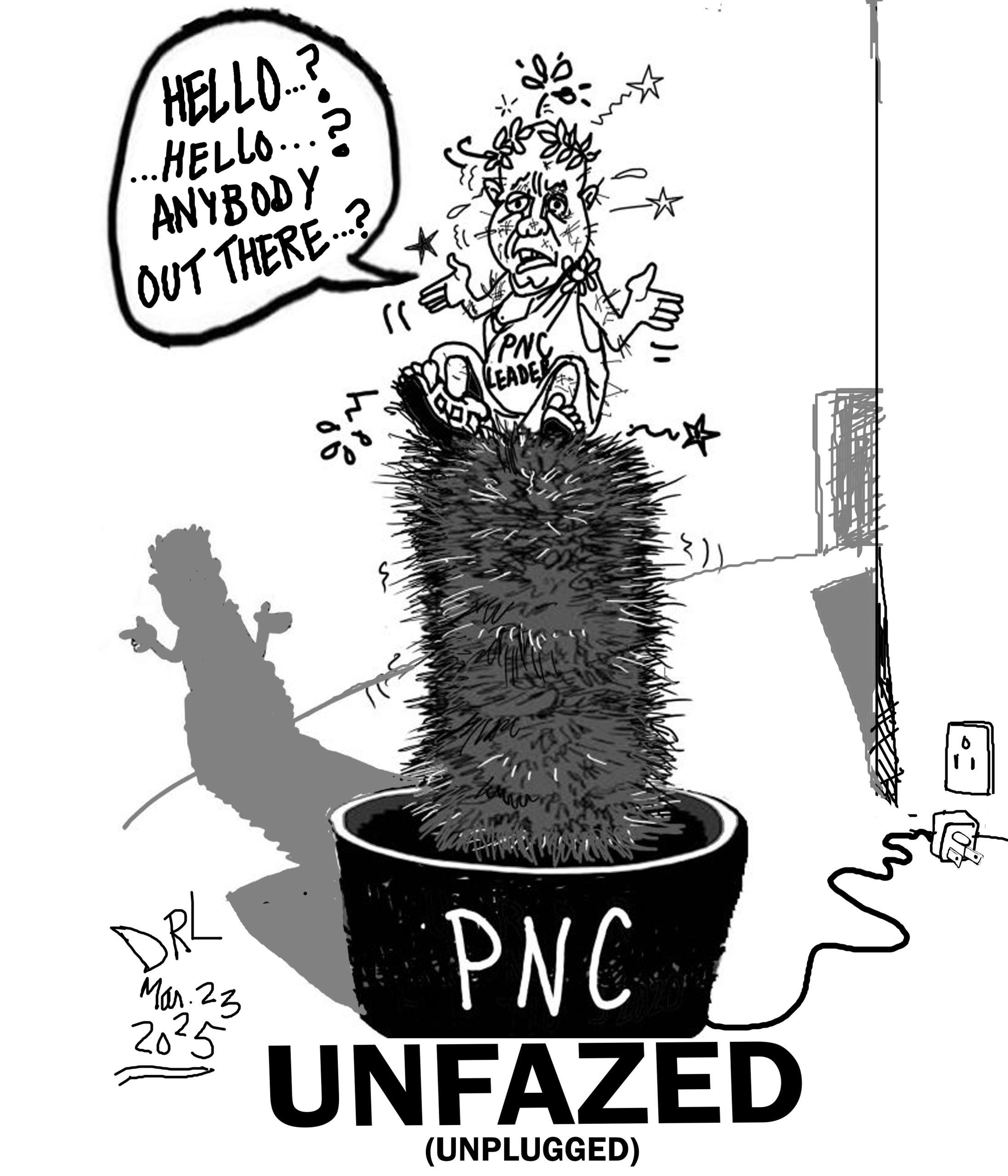Latest update March 28th, 2025 6:05 AM
Latest News
- Mice and Jermaine $1.7M Linden Futsal tournament starts tonight with three matches at Retrieve Hard Court
- “It will be a very bad day for Venezuelan if they attack Guyana or ExxonMobil”—Rubio declares
- Guyana gets info on U.S. tax evasion allegations against Mohameds, Mae Thomas
- US$35 injected into banking system to address foreign currency shortage—VP Jagdeo
- Citizens to stage protest today against lack of access to information in Guyana
EPA downplays Tsunami risk in ExxonMobil’s EIA
Apr 27, 2024 ExxonMobil, News, Oil & Gas
Kaieteur News – One week after Kaieteur News reported, while quoting from ExxonMobil Guyana’s Whiptail Development Project (the 6th oil project) Environmental Impact Assessment (EIA), that the project poses a potential Tsunami risk to Guyana’s coastline- the Government of Guyana through the Environmental Protection Agency (EPA) Friday evening, sought to downplay the warning.
It is instructive that the EPA’s statement was issued one day after Vice President (VP), Bharrat Jagdeo, was questioned about the findings at his weekly press conference and also downplayed the issue.
This publication reported that an earthquake is generally caused by the shifting of the earth’s tectonic plates and with the ExxonMobil led consortium’s latest US$12.7B project being located in the vicinity of the fault line close to the South American and Caribbean Plates, the activity poses increased seismic activity that could potentially see Guyana’s coastline being ravaged by a tsunami.
The EIA speaks about a tsunami that can be triggered in Exxon’s 6th oil project. In fact, it is documented in the company’s recently approved EIA by the EPA.
This newspaper reported that the document outlines that with regards to the Whiptail Development Area “deep-seated faults on the outer shelf, some of which appear to offset the seabed, may indicate a slightly higher risk of seismic activity than has previously been considered.”
As such, it was reported that “Guyana could experience tsunamis generated from seismic activity outside Guyana if such activity propagated waves of sufficient magnitude and in the required direction.”
According to the document, “major earthquakes frequently occur along the Lesser Antilles subduction zone, where the South American Plate is subducting beneath the Caribbean Plate.”
Whereas, the EPA said the following in its statement:
EIA Shows No Link between Whiptail Project Activities and Tsunamis
The EIA for the Whiptail Development Project does not indicate any link between the proposed project’s activities and Tsunamis.
Tsunamis are natural events resulting from undersea earthquakes caused by movement of the Earth’s tectonic plates. The Whiptail Development Project EIA informs that the likelihood of natural events such as tsunamis impacting the Development Project is minimal.
The EPA said it finds the information presented by the Kaieteur News on 21st April, 2024, to be highly misleading. The public EIA document referenced by the newspaper contextualises the activities in the Production Development Area (PDA) in relation to various natural disasters, including Tsunamis, as part of a comprehensive futuristic EIA assessment of risk.
To provide clarity for the public, the Agency presents a summary of the findings of the EIA for Whiptail Development Project – published in August 2023 and updated in April 2024 – in order to address the misleading assertions in the Kaieteur News article of 21st April 2024.
Firstly, the section of the EIA titled “Natural Hazard Risk Ratings for Guyana” highlighted findings from the United Nations International Strategy for Disaster Reduction (UNISDR) assessments in 2014. These assessments, conducted as part of a global initiative, identified floods, droughts, and landslides as the most significant risks to Guyana based on historical records. Notably, historical data did not indicate tsunami risk to Guyana.
Nevertheless, futuristic assessments by UNISDR took into account the potential impact of tsunamis on Guyana. According to UNISDR 2014, while floods pose the most significant risk, the risks from earthquakes and tsunamis were deemed not significant enough to be included in the economic analysis due to their predicted low recurrence interval.
Secondly, the Production Development Area (PDA) is situated approximately 294 kilometers from the boundary between the Caribbean and South American plates and over 1,050 kilometers from the nearest area of active seismic activity (near Puerto Rico). Moreover, Guyana lies within the stable interior portion (craton) of the South American tectonic plate, indicating minimal seismic risks to the country.
Lastly, a seismic hazard map developed by the U.S. Geological Survey (USGS) Hazard Mapping Program illustrates that there is only a 2 percent chance within 50 years of a very minor seismic event occurring in the PDA. Such an event would likely not even be perceptible to individuals at the exact location.
In conclusion, the EPA emphasises that the information provided by Kaieteur News was deliberately presented in a manner to mislead the public and did not accurately reflect the findings of the EIA regarding the risks associated with the Whiptail Production Development Area. It must be emphatically stated that the Whiptail EIA does not indicate any link between the Project’s activities and Tsunamis, EPA said.
Share this:
- Click to print (Opens in new window)
- Click to email a link to a friend (Opens in new window)
- Click to share on Facebook (Opens in new window)
- Click to share on WhatsApp (Opens in new window)
- Click to share on Twitter (Opens in new window)
- Click to share on Pinterest (Opens in new window)
- Click to share on Pocket (Opens in new window)
- Click to share on Tumblr (Opens in new window)
- Click to share on Reddit (Opens in new window)
- Click to share on LinkedIn (Opens in new window)
Related
Similar Articles

The Glenn Lall Show|| March, 17th, 2025
Follow on Tik Tok @Glennlall
THE BLUNT OF THE DAY

Sports
Mar 28, 2025
-Elite League Season VII doubleheader set for Sunday Kaieteur News- After a hard-fought weekend, the GFF Elite League Season VII returns to the National Training Centre (NTC) for an exciting slate of...Features/Columnists
Guyana and US sign pact to strengthen cooperation, address regional challenges
By Shania Williams Kaieteur News- Guyana and the United States signed a Memorandum of Understanding (MOU) on Thursday, aimed... more
The Caribbean: Destined to Grin and Bear the Consequences of Its Self-Created Vulnerabilities?
By Sir Ronald Sanders For decades, many Caribbean nations have grappled with dependence on a small number of powerful countries... more
Publisher’s Note
Freedom of speech is our core value at Kaieteur News. If the letter/e-mail you sent was not published, and you believe that its contents were not libellous, let us know, please contact us by phone or email.
Feel free to send us your comments and/or criticisms.
Contact: 624-6456; 225-8452; 225-8458; 225-8463; 225-8465; 225-8473 or 225-8491.
Or by Email: [email protected] / [email protected]
Weekend Cartoon
















